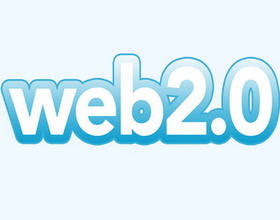 Paul Miller, Technology Evangelist (quite the job title), is about to begin any minute now. TALIS distributed a paper copy of their Library 2.0 vision document, “Library 2.0: The challenge of disruptive innovation,” in each of the CIL delegate’s bag.
Paul Miller, Technology Evangelist (quite the job title), is about to begin any minute now. TALIS distributed a paper copy of their Library 2.0 vision document, “Library 2.0: The challenge of disruptive innovation,” in each of the CIL delegate’s bag.
Agree or disagree, I could appreciate the effort to provide delegate’s with something of substance to read as opposed to just the usual glossy marketing materials (not that their isn’t some marketing here too). While “white paper” often means marketing cloaked in research clothing, I think i would still rather read this sort of discussion than the usual list of meaningless adjectives describing a project. At least it gives you something to blog about and deconstruct…
Paul’s a good speaker – funny, smart, and comes across as genuinely interested in Library 2.0 and making libraries better. In general, I’m always a little cynical of vendor sessions at conferences since I’ve been too many that turn into marketing sell jobs. In this case, I would have preferred to see a panel session with some non-vendor representation in order to bring more neutrality to the discussion, especially with the theme of “lets all work together,” but I wouldn’t say this was over the top in terms of being a Talis sell job. I do think vendors need to be on board with open standards and interoperability so after this session, I can really only commend Talis for making steps in this direction and challenging their business colleagues to do the same.
So a few rough notes…
- not just vendors, but libraries and vendors have to participate in 2.0
- the reality gap – How do people find stuff? The library isn’t the first word that comes to mind. It isn’t just people going to the Google site – they’re using the Google search appliance and services through other sites.
- active borrower numbers have plummeted in almost every library. But people still visit libraries and come through our doors…
- visits to libraries in the UK are actually going up since 2001 (many of his stats are UK although they can probably be extrapolated to North American markets).
The number of visits per borrower is on the increase. People are going online in libraries. 3% of online UK respondents prefer to go online using a mobile device.
Do people trust libraries? Yes (and Paul had stats to help prove it).
Paul highlighted long lists of information, databases, densely worded webpages, commonly found on library websites. This is an example of Not Good interfaces.(want to test it? see how long the scroll bar is on your webpage. The longer the browser scroll bar, the more your site may suck [”suck” is my wording].
Library 2.0 concepts = opening the library, pushing the library everywhere, engaging with actual and potential user communities, disaggregating the library systems, and then bringing them back together in new and interesting ways. “The library system should be like lego.” Do your own thing. Don’t buy lego and then only build the picture on the box.
Interesting examples of creative development: WPopac (Casey Bisson’s) WP overlay for their catalog. Greasemonkey scripts for Amazon – Dave Patton’s script that shows when a book is available or due back in your library… when you are looking at an Amazon item page. AADL’s experiments with new item book covers (looks like delicious library) or the online card catalog experiment (actual card catalog images; allows for patron commenting).
Build a community so that we can share platforms and ideas.
Why a platform?: Most efficient use of development capabilities so we don’t all need to start from scratch. It lowers the barriers to entry (the factory and lego is there for others to use). It offers an evolutionary path. It crosses the vendor divide (Paul stresses this as mandatory – vendors can no longer develop seperately.
I paraphrase, but he still sees competition in the marketplace, but with vendors cooperating and identifying where they can each specialize and do their own thing. vendors need ot have consistent APIs so that we aren’t divided amongst each other in our development efforts). Platform exposes libraries to the wider world. It must be open, and based on agreed upon standards and specs.
The Talis Network Platform (Skywalk) = components – Data Store (Bigfoot), Directroy (Silkwork), and Transactions (Stargate) with Data Analysis (Memphis) lying under all of these and web services drawing them all together. Talis Node Platform (Maya).
You shouldn’t need to change your ILS to interact and develop with other libraries and vendor systems. The platform takes away the level of complexity. As proof of concept, Paul showed a version (mockup?) of Talis Whisper’s user interface with Amazon and other web services tying into the retrieved search results.
RedLightGreen was also shown as doing similar (relying on the Talis directory). A mashup with Google Maps within the user interface could plot locations of the libraries that also have holdings.
Paul closed with some motivational remarks along the lines of challenge all of your assumptions, look at current business models, share innovation and think radically. All good. And then he closed with a Talis slide in 158 point font. Even a technology evangelist needs to get a pay cheque from someone…































